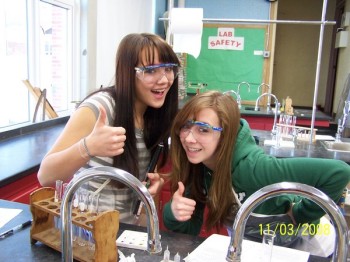The purpose of the labs was to determine how pressure, temperature, and volume were related in a gas.
Make your learning a conversation with others! You have watched demonstrations, read txt, practiced gas law equations, and done some labs. Now you must take all this learning and write an analysis, a conversation of what you learned. This analysis must be posted on your chemistry blog.
Write your analysis as a discussion or a story. Please do NOT write your analysis as a list of answered questions, even though you have been given a list of questions. You will be assessed on 1) knowledge of the subject material; 2) describing the material in your own words and in an interesting manner; and 3) personal contribution to the topic.
Labs you have done related to the gas laws are:
Hot Balloon: An Erlenmyer flask with approximately 50 mL of water in it and a balloon secured on top is heated, and the circumference of the balloon is measured before and after heating the water.
Cartesian Diver: A 2-liter soda bottle is filled with water and a medicine dropper placed inside. After being capped, the bottle is squeezed.
Soda Can Crush: A soda can with a small amount of water in the bottom was heated on a hot plate, and then flipped with tongs into ice water.
Pressurized Balloon: A 2-liter soda bottle that has a balloon inside was pressurized.
Pressure and a Bag: Two large jars with plastic bags taped over the mouths, one inside and the other outside.
Demonstrations you have seen related to the gas laws include the Bell jar vacuum. Individually, the following were exposed to a vacuum under the bell jar: glass of water, balloon, marshmallow, shaving cream, empty water bottle. You also saw the press of air against an evacuated metal sphere with handles.
Need help with definitions? WyzAnt has a decent tutorial here.








